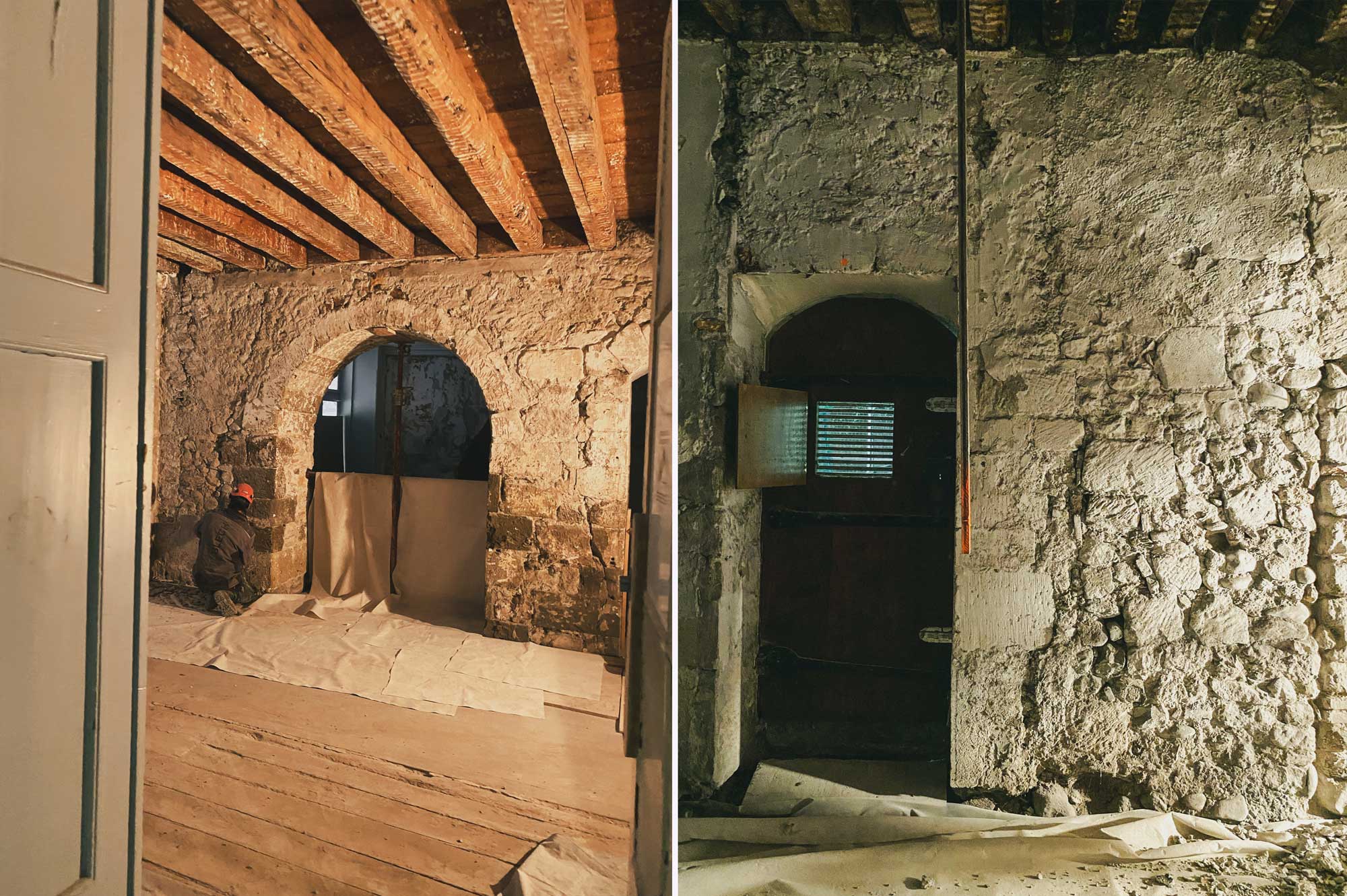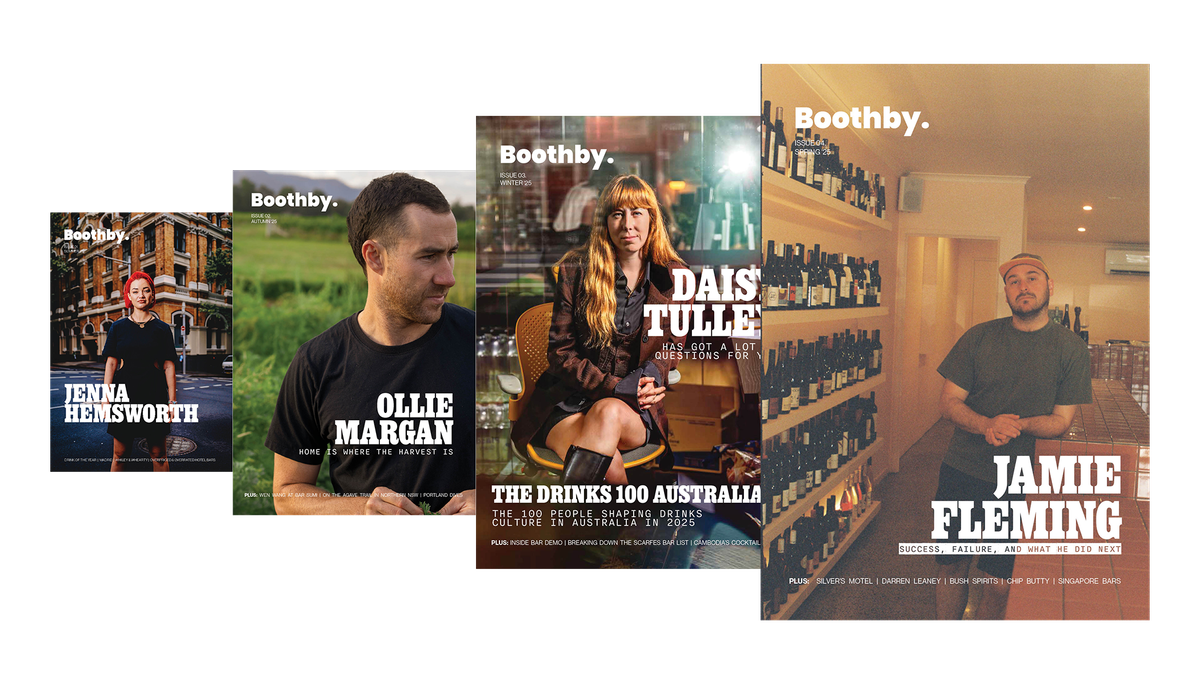For this weekend’s long read, a piece from issue number four by the talented Charlie Ainsbury. Charlie is an award-winning former Australian Bartender of the Year, cocktail comp winner, and an experienced bar consultant who shares his experience opening a bar in Geneva that just wasn’t meant to be.
While we have you, the next issue of Boothby is set to land at the start of December — you can get your copy here.
In the summer of 2022, we got our first project in mainland Europe. A friend and former manager from one of our Sydney venues had moved to Geneva after getting married. His new father-in-law was the landlord of a stunning 16th century building in the Old Town and wanted to turn its bottom floor and basement into a bar.
“Want to build a bar in Switzerland?” he asked.
“Yes,” I said.
He sent me some pictures and a shaky video of the site. It was a blank canvas. Great start. It meant fewer restrictions on our creativity. Before we even drafted a proposal, I had the bar figured out. I knew where the tables were going, which walls would be better suited for booths, I had a uniform designed, and the glassware already picked out. I caught myself googling, “bar top wood native Switzerland.”
After the usual back and forth with proposals, the contract was signed. I was elated. Not just because I was adding a new stamp in my passport, but because this was our first project in a new continent, and I helped land it. If it went well, it could lead to more work on this side of the world. It felt like growth. Like expansion.
At the end of their winter, I flew to Geneva. The plan wasn’t just to visit the site and get our bearings, but to properly immerse ourselves in the city and understand what Geneva was about because by the end of this trip, I needed to have the concept nailed.
Nailing the concept is the most crucial part of creating a bar. Every decision after that has to align with that concept. It doesn’t just shape the drinks or the style of service, it sets the tone for the music policy, its voice on social media, the style of glassware, even the colour of the coasters. The concept is the thread that runs through every decision we make. It was meant to guide us through what was supposed to be an 18-month project. And that’s the hardest part of the job to get used to. You get invested, drunk on the potential, you start selecting wood for the bar top, and sometimes it may never come to be.

Even though the site was technically a shell: a 500-year-old, dusty, hand-laid-stone-walled, brick-arched shell, it was never truly a blank slate. Like most of our projects, a lot of decisions had been made by the time I arrived. The father-in-law landlord, our key stakeholder, had some ideas.
“I love whisky”, he said. My friend added, “He also loves music. He’s in a band and they’re going to play in the basement bar.”
I looked back and there he was, smiling and nodding.
Perfect, I thought. Why am I here?
It’s never that simple. More often than not, we’re reverse-engineering a concept from what already exists like the character of the building, the stakeholders’ interests, the city and the culture.
Geneva reminds me of Canberra. A significant portion of the population is transient. There are the diplomats and politicians, but also the workforce, many of whom commute in from neighbouring France. What surprised me most was how casually people spoke about leaving the city for a good night out. If they wanted a weekend of fine food & drink, they’d hop on a train to Zurich or Paris in the morning and be there for an afternoon aperitif. Old Town had charm, though. Almost every corner is dotted with these ornate public water fountains, flowing with fresh, drinkable alpine water. Its stone basins and bronze spouts were often topped with lions’ heads or heraldic figures. Its cobblestone streets and architecture made it walkable, romantic, and atmospheric and that meant foot traffic, exactly what an up-and-coming live music and whisky bar needed. But the question was: what were we competing with?
I spent one night in Zurich for research, and it was inspiring to say the least. I drank martinis under Picasso’s at Kronenhalle, I had cocktails listening to jazz at a packed-out Widderbar and had to be dragged off my stool at Old Crow. But even then, I struggled to remember a single bar in Geneva that left an impression. There were nightclubs, beer barns, a few independent spots that ‘specialised in mixology’ but none quite hit the mark.
There was the Leopard Room Bar & Lounge though. The bar at the D’Angleterre Hotel that my hosts were just a little too keen to introduce me to. It’s the kind of place where diplomats drink two Martinis at a time and pretend not to notice each other. It’s all rosewood, gold and leopard print, with the faint whiff of expired cologne. The live music tried to keep things relevant but the whole place looked like it was pickled in 1987.
With all this, a concept started to form. I knew Geneva didn’t need another polished hotel lounge or whisper quiet wine cave. It needed something in Old Town. Something lived-in, unpretentious, and generous. Live Music & Whisky were to be on the posters but what we were really building was a home, a place where hospitality meant more than just service. A bar that would put Geneva, better yet, Switzerland on the map and be a beacon of fine drinking for the rest of the continent.
I thought about that bar so much. You would’ve been waved in by one of the olive-jacketed bartenders when you paused to look through the floor-to-ceiling windows. Inside, the room would slowly reveal itself. A grand space lined in 500-year-old stone. To your left, a 15-stool beechwood bar. Polished. Already well-worn. The whisky collection would be vast, but the team would make it feel simple. The signature cocktail of the house was to be poured from a bronze tap coming out from the back of the bar, shaped like a lion’s head. Booths at the back. Coveted window seats up front. Live jazz most nights. The light would be warm.
About a year in, momentum started to slow. It wasn’t unexpected though. Delays are part of the job, especially when you’re working with a 16th-century building. Plumbing and electrical are tricky in any heritage site, let alone one that’s been standing since the Renaissance. So, we stayed positive and treated the delay as a bonus. More time meant more things could get done. Our new opening date was spring 2023. Then it was summer 2023.
And then the emails stopped. No final note. No dramatic falling out. Just silence. Maybe it was the complications of working on that site. Maybe the budget blew out. Maybe the landlord just had other plans.
The best part of being a bar consultant is diving headfirst into projects like this. When the concept starts to form, creativity comes in rushes and it’s rewarding, and it’s addictive. To be able to create and shape every single part of the bar experience for the guest; how they enter, what they hear, what they smell, what they feel, it is a privilege to have that opportunity. And to think it can all start from a message from a mate: “Want to build a bar in Switzerland?”
But for now, this bar exists only on the hard drives of the people that worked on it, and that’s okay. The thinking, the research, the conversations, the drinks shared, and the time spent trying to understand a place, that doesn’t disappear or exist solely on a computer. That work lives on in floorplans, in the way light moves through a space, in the instinct to carve out something generous.
We didn’t open a bar in Switzerland. But we built one.








